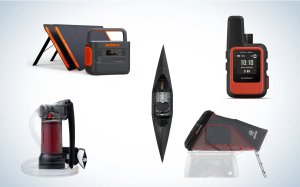We may earn revenue from the products available on this page and participate in affiliate programs. Learn More ›
North Dakota Game and Fish set its deer season today, and the number of licenses is down by 8,000 tags when compared to last year. In total, the state will make 64,200 tags available to hunters across all types of licenses, but whitetail deer licenses were hit the most.
“Epizootic hemorrhagic disease dramatically reduced white-tailed deer numbers along the Missouri River and parts of some Western hunting units,” said Casey Anderson, wildlife chief for the North Dakota Game and Fish Department. “As a result, license allocations in some units were dramatically reduced.”
Any antlered deer licenses decreased by 150 when compared to last year, any antlerless licenses dropped by 350, antlered whitetail licenses sunk by 4,150, and antlerless whitetail licenses went down by 3,700. Antlered mule deer licenses remained the same and antlerless mule deer licenses actually went up by 350. Muzzleloader licenses decreased by 168. Restricted youth antlered mule deer licenses remained the same.
Chronic wasting disease is on the minds of state officials, too. In areas that have seen chronic wasting disease, hunters can’t transport the carcass outside the unit that it was taken in. The only exception to this rule is if the unit is next to another CWD restricted unit.
Read Next: If Chronic Wasting Disease Is Fatal, Why Aren’t We Finding CWD-Killed Deer in the Woods?
“Last fall, 26 deer were harvested during the hunting season that tested positive for CWD, including three in new units,” Anderson said. “This has consequently altered deer management strategies in those and surrounding units.”
This isn’t the first reduction in deer tags recently. Other states have reduced the number of big-game tags in the wake of drought and disease. Much of this seems to be happening in Western states.

